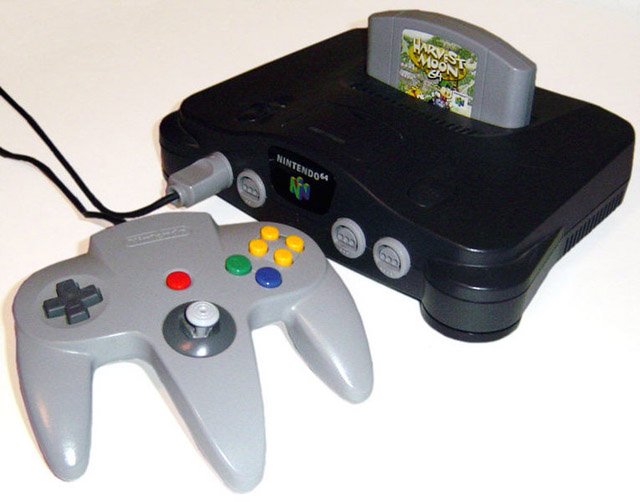Welcome...
...to the home of Fishsta's Retro Gaming Reviews, the TI-99/4A project, Articles, Music and Verbal Diarrhoea.
Nintendo 64

Whilst everyone else was releasing 32-bit CD-based consoles (obviously with the exception of Atari and their ill-fated 64-bit Jaguar console), Nintendo brought out this 64-bit cartridge-based console, and with more than reasonable success. Once again, Nintendo knew that they needed their "Killer App", or must-have game to try and get units sold, and they found it in Super Mario 64, although Goldeneye also proved quite breathtaking.
Nintendo's new console, as is usual for Nintendo, had extra features to set it apart from the rest. The analogue joystick saw it return to mainstream gaming, and since then it hasn't gone away, it's stayed popular, and it's easy to see why. The joypads themselves resembled 3-way sex aids, but we saw "Button Wars" continue as the N64 provided 2 gameplay buttons, 4 buttons marked 'C' (up, down, left and right - they were supposed to be camera control buttons primarily), two shoulder buttons (L & R, natch) and finally... Z. This button was located under the middle section of the joypad, and was intended as a replacement for the L button as you couldn't keep a finger on that when you were using the analogue stick rather than the D-pad. The console itself came ready prepared for 4 joypads to be plugged straight in, no need for multi-taps or the like. Memory cards, rather bizarrely in my opinion, were to be inserted in the joypad rather than the machine itself. In fact, to me, the need for memory cards was a silly move on Nintendo's part since the media of choice for the console was cartridges. Super Mario 64 and Goldeneye didn't need memory cards, but other games did. Also the need to insert a "Rumble Pack" meant that you had to make a choice... or risk data loss by hot-swapping them.
My God, that was a long paragraph. So, was the machine any good? Yes, but games got prohibitively expensive, sometimes pushing 60 quid a shot (that's almost Neo-Geo territory), and the release schedule seemed very slow. There was one last gripe... games started to require the "memory expansion pack", which was basically a video memory upgrade that went into the expansion slot on the front. Games like Perfect Dark were practically unplayable without it, about 30% of that particular game was available.
In the end, the 64 was moderately successful, but not as successful as it could have been. If only the CD add-on (the 64-DD? I'm sure that's what it was called) had been a great success, eh?
Other Articles
There are currently no other articles regarding this system. Got a suggestion for an article? Visit The Guestbook and let me know!
 GoldenEye
GoldenEye Super Mario 64
Super Mario 64